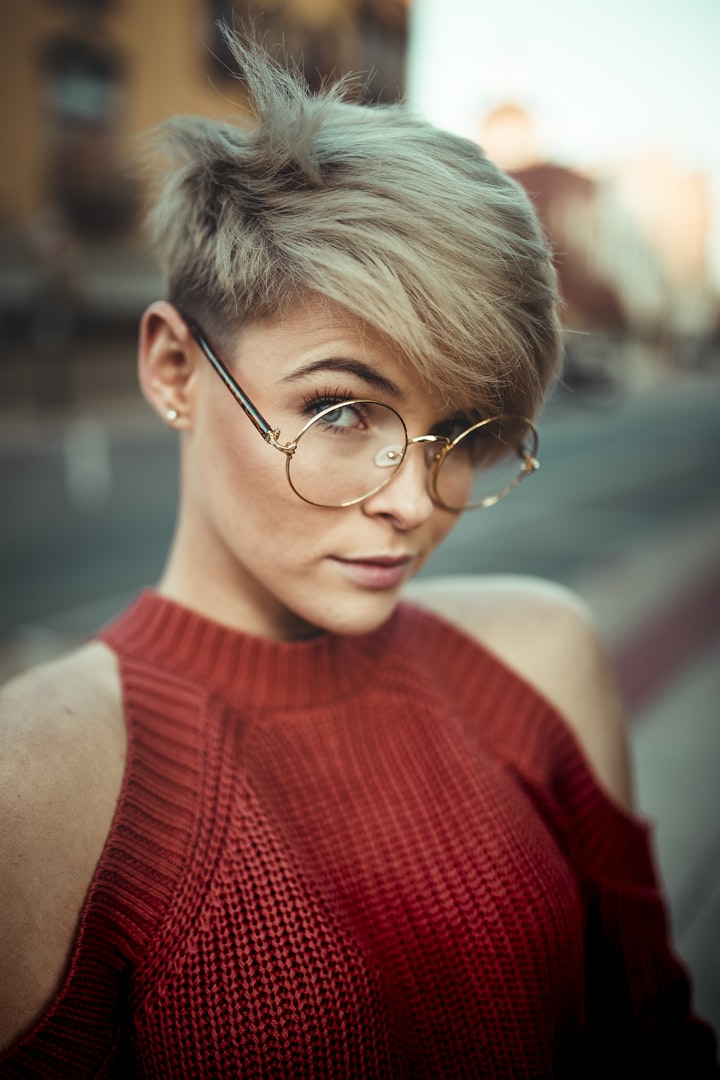I Am Ready for the Revival of Modern Subculture in 2021
Sweet Nostalgia for a Decade Before My Time

I was born in 1971 and from early childhood I developed a love for fashion. Having a talented Mum who could sew taught me as a little girl about creativity and the importance of owning my individuality. Looking at old photographs of her in the United Kingdom made me appreciate different styles and patterns. Rummaging through her closet to run my little fingers across the fabric of classic pieces she saved, inspired a sweet nostalgia in me for a decade which although before my time was my earliest inspiration in fashion. The era of Modernist Subculture struck a fancy in me and I am ready for its revival today in 2021.
Mod, the shortened term for Modernists began in the late 1950’s in the United Kingdom by a small group of young working age men. It was post war time and the recovering economy meant more earnings were kept in the pockets relieving the stress of only having enough to contribute to household expenses. With more cash at their disposal, young men wanted to spend it on fashion and social events rejecting the war time gloom of the previous decade. This new found freedom promoted a youth society or subculture expressing individuality through fashion, music & art. The influence of jazz and soul along with Italian and French designs seen in art films and magazines eventually caught on to young woman joining the Mod Movement. In the 1960’s this movement would explode globally as Mod fashion was redefining young people to think “Do your own thing.”

This new movement identified by a rebellious youth who were inspired by Cultural Revolution taking place in Europe. Jazz replaced the classic sentimental sounds of the 50’s with the original Modernists listening to Miles Davis and Charlie Parker. In the 1960’s, the Modernists would gain perhaps its highest notoriety with these pop-rock bands; The Kinks, the Beatles & the Rolling Stones. Bands such as Small Faces and The Who directly emerged out of the Modernist movement. Club culture was an important part of the Mod lifestyle fueling all night dancing and partying.
Fashion during this time became sophisticated as young men wanted to pay more attention to their looks. Sharp tailoring was born out of the new art, music & club culture. To be a part of the new “cult of cool” owning at least one good suit was essential. A pin stripe suit was even better especially if tailor made. The “Beatle boot” became a 1960’s staple as well as baggy US Army styled parkas to wear over curated outfits. This became popular wear protecting clothing while riding the signature motorbikes of the era; the Vespa or Lambretta. Other staples were tight wool or cashmere jumpers, round collar shirts with thin ties, polo shirts for casual wear, trench coats & Harrington jackets. Chelsea boots & Clarks were also stylish and some men opted to wear makeup testing gender roles.

At the end of the 1950’s, women began embracing Mod fashion adopting an androgynous approach wearing men’s blazers and suits. Hairstyles became shorter with the trending bob and pixie cut as women tested the society “norm” in women’s apparel. The new found sense of freedom from the preconceived notion of how a woman should look confirmed the previously new founded sense of “Do your own thing.” It also gave way to another bold statement: “Anything goes.”
With the arrival of the swinging 60’s and London’s very first boutique shop opening on the infamous Carnaby Street, more feminine pieces were introduced into women’s clothing. Sleek lines and simple silhouettes were added into the mix. Drop waist jackets, bright colorful tights and short shift dresses in either bold colors & geometric designs or black & white optical patterns became household staples. The mini skirt popularized by designer Mary Quaint took the United Kingdom by storm as hem lines became shorter and shorter. Traditional womenswear continued to challenge tradition with full tailored suits, dungarees and breeches. Large plastic bracelets, flat shoes and knee high boots were compliments to women’s Mod fashion and the focus on makeup became eyelashes. While facial makeup was kept to a minimal, women were going crazy for false eyelashes inspired by an iconic model of the era: Twiggy.

Today in 2021, I would like to see another revival of Modern Subculture in both Men and Women’s apparel. When I look back at the era of the 50’s and 60’s I can almost predict another comeback. Young people were finding themselves and their own sense of freedom after the hardship and the depression of World War II. A recovering economy offered some light at the end of the tunnel and improving finances inspired the youth of society to break free from the restrictions of an implied normal position in the world. Music, art & fashion provided an outlet for young people to escape the gloom of previous war time and branch out on their own from the constraints and depression known to their predecessors.
If we look closely at society today with an ongoing pandemic still in upswing and the violence across the nation with hate crimes and police brutality, if is more than fair to say that people, especially young people, will be looking for an outlet of escape. The arts, music & fashion are reflections of creativity often that come from hardship and artists who are trying to elevate a society moving on from the pain of the past. I expect to see inspiration drawn from post war time as nostalgia for the days of yesteryear when people rebelled against the sadness and depression of the times creating a new look, a new vibe moving forward in self-expression and optimism for a brighter future.

Fashion trends come and go and circle right back around again recycling sweet nostalgia of decades gone by. Modern subculture has had its share of comebacks reappearing again in the late 70’s with a band called the Jam despite the overshadowing hippie movement. Another comeback was in the 90’s with British pop stars the Blur and Oasis adding in new elements making revival their own. In reality, Mod fashion has never completely died out. It has simply evolved transforming over time to fit designer’s newest creations. Mod was regularly referenced to in Marc Jacob’s 2013 Spring Collection and just short of a decade later, I do expect to see more stylists reverting back to the days of the swinging sixties.
I leave you now with one of the iconic models in Mod fashion: Twiggy. She was deemed one of the “It” girls in the 1960’s by designer Mary Quaint. She dressed her in a look that became popularized in London as the “Chelsea Look.” Twiggy, unlike the curvy Marilyn Monroe of the decade before was extremely thin noting yet another defining moment in the fashion industry. Girls copied her short pixie cut and wore false eyelashes copying her style. Twiggy’s signature eyelashes were a notable combination of three sets of lashes.

About the Creator
Marilyn Glover
7x Medium boosted poet, editor, and Reiki Master who is at her best when in nature. Creating to boost humanity while often not coloring within the lines. Follow me at: https://gmarilyn009.medium.com/






Comments
There are no comments for this story
Be the first to respond and start the conversation.